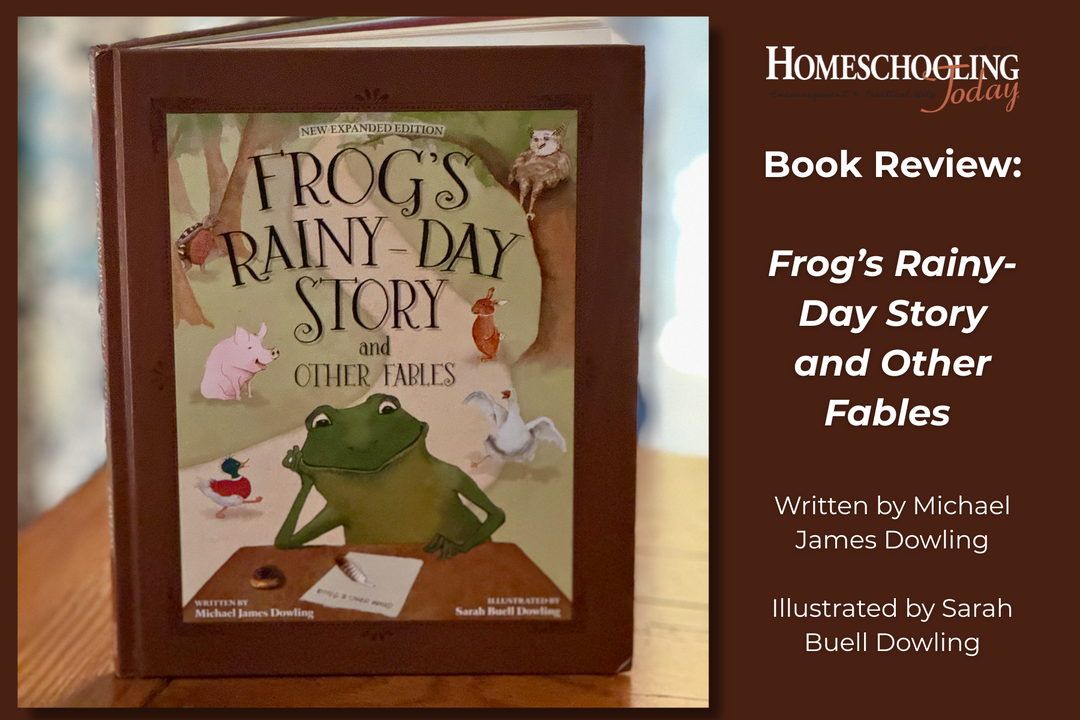Feeling Unmotivated? The Secret to Getting Excited About Homeschooling

If you're feeling unmotivated and simply don't want to do school with your kids, it's time to make a change. Discover the secret to being excited about homeschooling again!
When you started homeschooling you were probably excited. You saw the possibilities. You pictured everyone gathering around the table learning from the "perfect" curriculum.
But a few years or even months later, you begin to feel weary.
Maybe you find it hard to get out of bed in the morning because you just don't want to face another day of trying to get your kids on track with their schoolwork? Instead of the anticipation you felt at the beginning, you're unmotivated, tired, and question if you even want to homeschool anymore.
Dear Mom, we have a secret we want to share with you about how you can find the motivation you're missing... to feel like you did when you first started homeschooling.
Getting Motivated
Motivation: the reason or reasons one has for acting or behaving in a particular way.
Motivation is the foundation of being productive, and there's no shortage of advice about how to get things done. It's not uncommon to hear:
- Know your why. When you have a big enough why for something, you are more likely to do it. When things are hard, we can remind ourselves of the reason we chose to homeschool in the first place.
- Set goals. Goals give us something to aim for, something to focus on when we are tempted to get off track.
- Just get started. Newton said it a long time ago, "An object at rest stays at rest and an object in motion stays in motion." The starting, not the doing, is actually the hardest part of anything.
All of this is great advice for the homeschooling mom. But in all of this advice there's something missing.
What's Missing? What's the Secret to Being Motivated?
We naturally want to do things we enjoy.
Our kids definitely know this! How often have you heard the complaint... the dreaded, "I'm bored." Yes, there are times that we just have to do things that are difficult and even boring, but that doesn't mean school has to be that way most of the time. And it doesn't have to be that way for you either.
Have you ever really looked at the definition of bored? It means, "feeling weary because one is unoccupied or lacks interest in one's current activity." How is that conducive to learning? Why would you want to feel like this long term?
Nothing is more overwhelming, more un-motivating than dealing with bad attitudes—both our kids and ours.
We started talking about this idea in the article, How to Make Homeschooling a Learning Adventure You'll All Enjoy!
We wanted to dig into this idea a bit more—to give you some practical ideas to make learning fun for you and your kids. Because we want you to be excited about homeschooling again and we want your children to be excited too!
Ideas for Bringing Joy to Your Homeschool
Before we jump into these ideas, let's talk about three main objections to the types of activities we're going to suggest.
"I don't like doing experiments, hands-on things, or crafts. I would much rather the kids sit down and do their schoolwork."
We get it. Not everyone enjoys these types of activities. But we want to give you a challenge. Do them anyway for a few weeks. See if it is as hard or unpleasant as you might think. Watch how your kids react. Do you notice a difference in their attitude? Do you see a difference in your own? Are you all enjoying school more? Is your relationship better?
Seeing the joy in our kids' eyes and noticing how much more engaged they are in learning is a strong motivator.
"I'm afraid I'l leave gaps in their education."
No one can learn everything. So yes, there will be gaps. But the good news is that you can give them a foundation—a love of learning and the ability to know how to learn.
Here we are focusing on developing a love of learning!
"We need to finish our curriculum. We barely get through the lessons and don't have time to add 'extras'."
It's time we have a mindset shift. We teach our children, not the curriculum. These activities aren't extras. They are some of the most powerful ways to help our kids make connections, discover, and truly learn.
There are a lot of different reasons people homeschool, but if you homeschool because you want to do it in a way that ignites a love of learning, that fosters creativity, that motivates your children to try new things and dig in deep… do something new. Choose to homeschool boldly!
Play More Board Games
No matter how old your children are, games can be a regular part of their homeschool routine. Games teach math skills, geography, strategy, graciousness in competition, cooperation (yes there are cooperative games now!), critical thinking skills, and more.
Games can even be a jumping off point for other learning. Check out the ideas in The Best Learning Activities for the Game Ticket to Ride.
And don't stop with just playing games! Challenge your children to design their own. It can be a great project to go along with a unit study you've done when they include facts and questions from their studies. It's the perfect opportunity to write a "how to paper" (directions), include art (design of the game), and have fun doing it.
Incorporate Hands-on Activities in Your Week
Kids have different learning styles, but all kids benefit from doing. Hands-on activities involve all the senses. They keep kids engaged in learning as they discover instead of simply reading about something or watching someone else.
Some of our favorite hands-on activities include:
Science experiments. You'll find plenty of easy experiments to do online and at the library. Before doing the experiment, ask your kids what they think will happen (their hypothesis). Simply do the experiment, or have them write down or draw what is happening. Was their hypothesis correct? If it isn't, ask them why they think the results were different than what they expected.
Nature walks. The foundation of all science study is observation. Taking a nature walk and paying attention to all that you see, hear, and feel is a powerful learning experience. Bring a nature journal, or simply enjoy the time outside. Have your children close their eyes and really notice all the sounds around them. Ask them to identify what they are hearing. Talk about the changing foliage in different seasons and the different insects you see.
Math manipulatives. Using math manipulatives to learn new concepts is especially powerful for young, concrete learners—whether you buy pre-made ones at an educational store or make your own by using what you have around the house. Find other ways to teach math in the Learning Naturally column of our Spring 2021 issue!
Salt dough maps. Part geography, part sculpting, salt dough maps allow kids to see physical geography in a whole new way. Don't know how? Check out How to Make a Salt Dough Map from our friends at Weird Unsocialized Homeschoolers!
Cooking. Cooking is a great way to learn math and following directions. It gives kids a springboard to studying nutrition. GeoMatters even has cookbooks to make learning about the US or World more fun! You and your kids will love Eat Your Way Through the USA and Eat Your Way Around the World.
Encourage Creative Writing (Even in High School!)
Creative writing develops your kids writing muscles—ones that will make their essays and papers so much stronger as they get older. A child who has practiced creative writing will be better at coming up with introductions that hook the reader, think of stories that will not only support their points, but grab the reader's attention. They'll notice connections other's don't—the essence of a good essay.
You'll find ideas for creative writing that work for any age in our article 3 Creative Writing Activities Inspired by Children’s Stories and Poems.
Don't Skip Arts & Crafts
It's so easy to think of creating art and crafting as the thing we add when we are finished with "real" schoolwork. That's the way many of us grew up, after all. But consider the impact these activities can have in your homeschool. Doing arts and crafts:
- Fosters creativity
- Teaches kids to "see" (there's nothing better than drawing or painting to help kids pay attention to details!)
- Develops fine moter skills
- Brings joy and beauty to their days
Artwork can add a hands-on element to learning about a variety of subjects. Your children can illustrate creative writing projects, draw or paint in a nature journal, sculpt a model out of clay. There are so many opportunities.
Resources:
- Check out Emily's Art Ideas at Table Life Blog!
- Do your kids love crafting? The Homeschool Master Academy has collected 22 hands-on crafts for kids.
- And one of our favorite resources for all ages are the chalk pastels from You Are an Artist! Over the years, they have contributed several art projects to Homeschooling Today readers including Nebula Chalk Art Tutorial and Fall in Love with Art.
Try Poetry Teatime
Poetry teatime was made popular by Julie Bogart of Brave Writer. It's a fabulous idea! You simply gather around the table, have some tea or favorite drinks, add some sort of treat, then read poetry to one another. Yes, it's that simple.
So many people hate poetry because they grew up trying to analyze it. Poetry was meant to be read, to be pondered, to be enjoyed. It's a great way for writers to play with words and thoughts and ideas. By doing poetry teatime with your kids, you can bring back the joy of poetry and spending special time together. And yes, it works great with both girls and boys! We started off with the silly poems of Shel Silverstein and my two boys asked to do poetry teatime!
Learn more about how to incorporate poetry teatime into your routine with Homeschool Mastery Academy's article, The Ultimate Guide to Homeschool Poetry Tea Time.
Bring the Joy
Ultimately, you'll find more joy in your homeschool when you focus on relationships. But a steady diet of only textbooks and worksheets leave little time for homeschooling alongside one another. It's through the reading aloud and talking about the book, through doing an experiment and trying again if it doesn't work, through making messes and trying new things that we have the opportunity to build our family ties.
It's the together part of homeschooling—the joyful part—that will get us excited about homeschooling.














